As the world prepares to celebrate this year’s World Water Week during 23-27 August, through this blog U Surendran and Manoj P Samuel discuss the role of Extension and Advisory Services in promoting sustainable water use.
CONTEXT
Water is truly at the core of sustainable development. Water is significantly linked to climate change, agriculture, food security, health, equality, gender and education, and there is already international agreement that water and sanitation are essential to the achievement of many of the UN’s sustainable development goals. More than any other natural resource, water is considered to be the elixir of life. So, the conservation of water resources is very important, especially for our collective future. The utilization of water and water resources will become more crucial in the coming years. Sustainable water management is designed and practiced for the conservation and utilization of water and water resources. This concept intends to minimise water consumption, maximise the use of sustainable water resources, make water systems sustainable and reduce water pollution.
 World Water Week 2021 will be held under the theme Building Resilience Faster, with a focus on finding concrete solutions to the world’s greatest water-related challenges, starting with the climate crisis and including water scarcity, food security, health, biodiversity, and impacts of the Covid-19 pandemic.
World Water Week 2021 will be held under the theme Building Resilience Faster, with a focus on finding concrete solutions to the world’s greatest water-related challenges, starting with the climate crisis and including water scarcity, food security, health, biodiversity, and impacts of the Covid-19 pandemic.
Currently, agriculture accounts (on average) for 70 percent of all freshwater withdrawals globally (and an even higher share of ‘consumptive water use’ due to the evapotranspiration of crops).Water plays an important role in food security by being a critical input for agricultural production. Irrigated agriculture represents 20 percent of the total cultivated land and contributes 40 percent of the total food produced worldwide. Due to population growth, urbanization, industrialisation and climate change, competition for water resources is expected to increase, with particular impact on agriculture. Promoting sustainable water use therefore should be a priority for both research as well as Extension and Advisory Services (EAS) in the agricultural sector.
“When the well’s dry, we know the worth of water.” – Benjamin Franklin
EXTENSION AND ADVISORY SERVICES FOR SUSTAINABLE WATER USE
Extension and Advisory Services (EAS) is often presented as one of the most important influences on the adoption of any innovations, especially from the point of view of the technology supply push theory. This is because extension can help users/stakeholders overcome barriers or constraints in achieving their goals. In the case of Agricultural Extension Services, it has been shown that when the extension services are more accountable, and work in tandem with farmers’ needs, and provide the required technical knowledge and information, then it is more successful. EAS for sustainable water use should support application of scientific research, knowledge, and technologies to improve water use efficiency in agriculture through farmer education.
Centre for Water Resources Development and Management (CWRDM)
Recognising the need for catering to the R&D needs in the field of water management, the Government of Kerala established a premier R&D institution named ‘Centre for Water Resources Development and Management’ (CWRDM) at Kozhikode, Kerala (http://www.cwrdm.org/). The mission of CWRDM is to enhance the quality of life by ensuring water security for all by providing necessary Research and Development inputs, with special emphasis on the humid tropics. Training and extension services are also an important mandate of CWRDM.
|
Box 1. CWRDM |
Based on our experiences in this sector we proposed the following broad categories where EAS should focus on promoting sustainable water use. The agencies involved should have a thorough understanding on all these aspects. The topics discussed are exclusively made in the context of Kerala, but it will hold good for any other region.
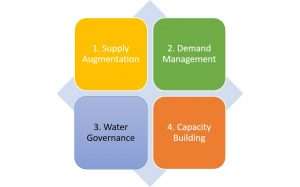
I. Supply Augmentation
The prime objectives under the supply augmentation sector are classified into three sections (A to C) as discussed below.
A. Suitable and equitable water allocation for all water use sectors and fulfilment of basic water requirements
Strategies
- Prioritization of water use for various sectors, i.e., domestic, agriculture, industry, conservation of ecosystem, etc., and setting up of water-use criteria/allocation to various sectors from Grama/Block Panchayat to District level.
- Promotion of conjunctive use of surface water and groundwater.
Action Plan
|
B. Improving the water use/management efficiency
Strategies
- Renovation of existing water resource infrastructure;
- Protection of natural resources, especially the water recharging ecosystems;
- Replication of successful models of supply/water management in other feasible areas.
Action Plan
|
|
Box 2. Demonstration of Wick Irrigation
|
C. Creation of new water conservation/storage structures
Strategies
- Promotion of water conservation measures;
- Creation of new structures on a priority basis.
Action Plan
|
II. Demand Management
Demand management sector is grouped into five user categories: Domestic (including drinking water), Irrigation, Industry, Hydropower, and Ecosystem services including wildlife needs. However, by considering relevance to this blog, here only irrigation is discussed.
Irrigation: Improving the irrigated area and crop water productivity
Strategies
- Preparation of block level and panchayat level irrigation plan by considering all the existing schemes and feasible new schemes at AEU level;
- Improvement of the water use efficiency for maximizing water productivity which is the limiting resource (i.e., More crop per drop of water used);
- Better stakeholder participation in irrigation management through decentralization.
|
Action Plan
|
|
Box 3. Case studies on demonstrations of drip fertigation under Farmer Participatory Action Research Programme |
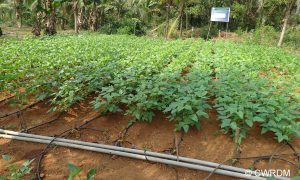 Drip fertigation plot- Cow pea
Drip fertigation plot- Cow pea
III. Water Governance
The prime objective here is to frame/modify the statutory mechanisms for effective management of water resources in the district that is in transition to polycentric water governance.‘ Participatory irrigation management’ is a concept that allows farmers to become decision makers while ensuring equity in water supply. This system addresses the water woes of tail end farmers – to some extent – by scheduling and regularizing water supply and associated irrigation. It considers both the temporal and spatial distribution of water ensuring canal water availability at the right time and the right place, mainly through farmer cooperatives societies, which work in association with the concerned irrigation department. This system is still under practice in some of the command areas.
|
Box 4. A unique case from Kerala |
Strategies
- Defining the rights and responsibilities for various water users;
- Involvement of stakeholders at different levels of governance.
Action Plan
|
IV. Capacity Building
The prime objective is to empower human resources in the water management sector and Extension Advisory Services (EAS) so that they can take a lead role in this.
Strategies
- Human resources development for scientific water management;
- Reorganization and strengthening of institutional mechanisms, wherever necessary;
- Establishment of river basin authorities for the major river basins in the district;
- Strengthening of Research and Development activities in the water sector;
- Awareness and skill development.
Action Plan
|
|
Box 5. Demonstrations on use of domestic waste water for vegetable production
|
IMPLICATIONS FOR EAS
Capacity Development on Sustainable Water Use
There is a need for continuous training of EAS staff and others on different aspects of Sustainable Water Use. Since the 1990s, CWRDM has been organising extensive trainings on integrated watershed management for elected representatives of local self-government departments (LSGDs) and NGOs under the People’s Planning Programme. Currently the Water Resources Management Training Programme (WRMTP) at CWRDM is providing training on various aspects of water and land management for different stakeholders, including farmers, officers of line departments, elected representatives of local self-government, and NGOs (Box 6).
|
Box 6. Trainings at CWRDM |
In addition to CWRDM, many other Training Institutions under the Ministry of Agriculture & Farmer’s Welfare, such as State Agricultural Management and Extension Training Institute (SAMETI), Agricultural Technology Management Agency (ATMA), Extension Training Centre (ETC), Soil Conservation Training Centre, etc., and Irrigation Design and Research Board (IDRB) under Ministry of Water Resources, Government of Kerala, are also offering training programmes on water and land management. Krishi Vigyan Kendras (KVKs) of ICAR and Kerala Agricultural University (KAU) and NGOs in all districts are also giving training on natural resources management to extension workers. These training institutions need to be interlinked and partnerships have to be established to make their training programmes successful.
The major constraints of the above-mentioned training institutions are as follows:
- Lack of funds;
- Lack of expert trainers/subject matter specialists;
- Difficulty in conducting hands-on training due to pandemic restrictions;
- Lack of infrastructure and instruments;
- Lack of training needs assessment and feedback studies; and
- Training activities and capacity building programmes not figuring in the priority list of concerned departments/agencies.
Many KVKs lacks experts or subject matter specialists in the domain of water resources management. Hence scientific and technical experts have to be appointed in KVKs located in those districts that are facing issues with water stress, floods, decline of groundwater table, and other natural resources management problems. However, a few KVKs have successfully taken up activities on sustainable use of water resources and effectively demonstrated them at community and field levels, by ensuring farmer participation.
Hence these concerns need to be addressed in order to make the training programmes more meaningful and to achieve the desired impacts on sustainable water use.
Strengthening inter-departmental coordination
Major irrigation projects that are dealing with dams and command area are managed by the Department of Irrigation and Water Resources. However, the micro-irrigation projects are managed at different levels by both – the Departments of Agriculture and Irrigation. Most often their interventions are limited only to the command area and hence the catchment area interventions including drainage line treatments, source protection and groundwater recharge activities, are ignored. Departments working in water conservation and management activities therefore need to be linked with those managing irrigation projects and there is a need for better coordination in this area. For instance, water conservation and use efficiency improvement is being dealt with by many departments including Irrigation and Water Resources, Agriculture, Soil Survey and Soil Conservation, Ground Water, Rural Development, Local Self Government Departments(LSGDs), etc., under programmes such as Pradhan Mantri Krishi Sinchayee Yojana (PMKSY),Mahatma Gandhi National Rural Employment Guarantee Act (MNREGA), Jal Jeevan, etc.
In Kerala, as the three-tier decentralization of powers is working well, the efficiency of projects implemented is relatively better than in other states of India. However, still there is scope for improvement for better coordination and partnership activities between the line departments and it is suggested that these activities can be coordinated by an agency like CWRDM /KAU/similar research and development organizations.
Strengthening Evaluation
Since the Government of India is nowadays placing more emphasis on water conservation programmes through different missions brought under the umbrella of Pradhan Mantri Krishi Sinchayee Yojana (PMKSY) programme, in which financial assistance to State Governments are being provided. Line departments at the state level, in collaboration with research organizations such as CWRDM, and KAU should have programmes for evaluation of these techniques after implementation; and also carryout relevant extension programmes such as large-scale demonstrations and associated seminars over a longer period of time, till the desired impact is achieved.
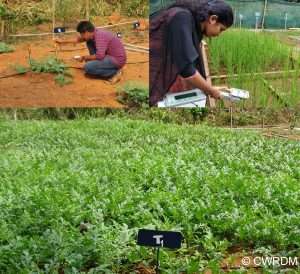 Experiments for developing appropriate water management options
Experiments for developing appropriate water management options
Curricula Reforms
The management of natural resources (NR) is generally viewed as a topic related to ecology and environment and not to agriculture. Natural resource management, especially water resources management, has to be included as an important component of the BSc Agriculture curricula. EAS providers should have an in-depth understanding of the water-energy-greenhouse gas emission-agriculture-climate change nexus. The curricula have to be reoriented and aligned with SDG-6: Water and sanitation for all by 2030, mainly to mobilize EAS actions which help to transform how we manage and use water sustainably and efficiently.
END NOTE
EAS for sustainable water use should be supported by an adequate knowledge-exchange system and the success of EAS would depend on how greater institutional responsibility is shared among all the stakeholders in water-related policies and development of strategies. This, in turn, would create an enabling environment and provide an incentive for all relevant stakeholders to share greater responsibility for sustainable water management across the entire gamut of water resources. The capacity of EAS on the topic of sustainable water use needs to be considerably enhanced. Promotion of more water-efficient practices have wider environmental benefits and is critical for ensuring economic profitability and prosperity to posterity.
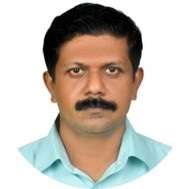 Dr U Surendran, is Senior Scientist, at the Centre for Water Resources Development and Management (CWRDM), Kozhikode, Kerala, India. (Email: suren@cwrdm.org)
Dr U Surendran, is Senior Scientist, at the Centre for Water Resources Development and Management (CWRDM), Kozhikode, Kerala, India. (Email: suren@cwrdm.org)
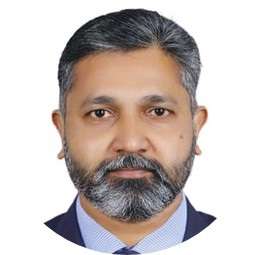 Dr Manoj P Samuel is Executive Director at the Centre for Water Resources Development and Management (CWRDM), Kozhikode, Kerala, India. (Email: ed@cwrdm.org)
Dr Manoj P Samuel is Executive Director at the Centre for Water Resources Development and Management (CWRDM), Kozhikode, Kerala, India. (Email: ed@cwrdm.org)

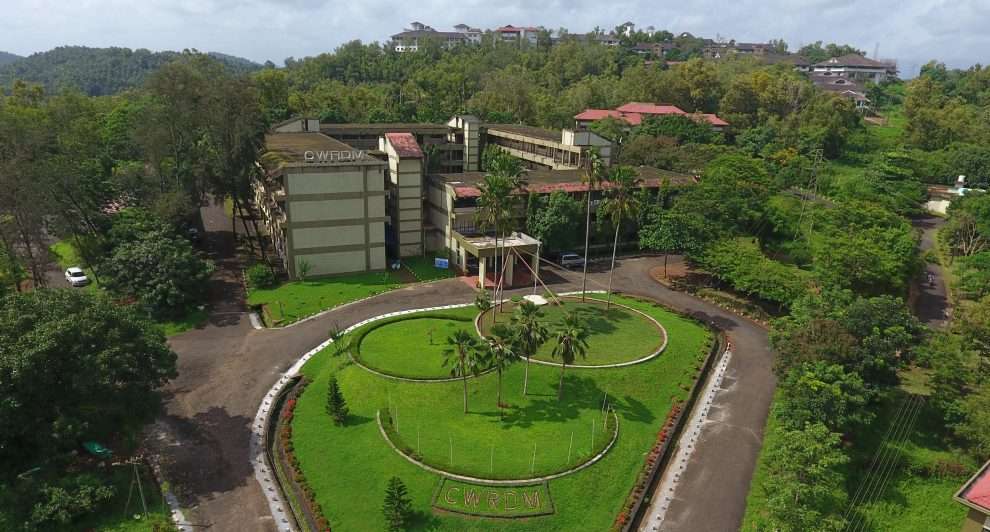
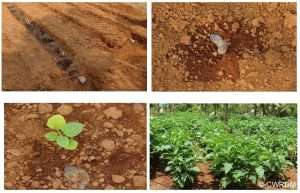
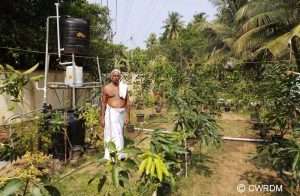

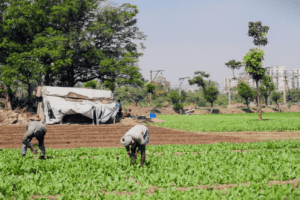

“Thanks for the blog on water, which is an important natural resource.
Congrats to Dr. Surendran and Dr Manoj Samuel for highlighting the role of EAS in sustainable water use, in relation to supply augmentation, demand management, water governance and capacity building.
I feel water governance is not properly covered in the blog, while the other three segments are fairly covered.
Governance is a prerequisite for improving water management. Governance should cover what? (in terms of functions), how (attributes) and why (related to outcome). There are many concepts related to water such as water foot print, crop water budgeting, water quality standards, convergence of institutions and functions, etc which have to be captured under water governance.
The authors have only mentioned about poly-centric water governance, which needs further elaboration.
Hope CWRDM will take care of water governance in its totality”
“Very valid and important comments by Prasad sir. We’ll surely deliberate on this and come out with better strategies.
Unfortunately as an organization, CWRDM doesn’t have much stake and role in governance as it’s generally done by the line departments like Irrigation, Agriculture, Rural Development, KWA, KSEB etc. However, I do admit that we have to put more efforts and come out with new initiatives on Water governance, pricing, allocation and other policy issues. Gender issues and equity in water is also getting prominence.
We are working on the scientific and technical aspects of water foot print, crop water budgeting, water quality standards, but didn’t explore the possibility to translate them to a governance model.
We’ll come out with a policy paper with thrust on governance issues within a couple of months, and share with you”
“Thanx ,Congratulations
and greatly appreciate Drs Surendran and Manoj for this valuable contribution on Sustainable Water Use. Amazing information and great learning.Hats off to AESA.
“Congratulations to the authors Dr. Surendran and Dr.Samuel on projecting the need for sustainable water usage and the efforts the Government of Kerala is making to this end. I may add here that the issue of water scarcity in India cannot be solved without appropriate policies in place. The price we pay for the use of this important non-renewable resource is minimal. It is well known that states like Punjab, Haryana, Uttar Pradesh, Andhra Pradesh, Karnataka etc use water recklessly for irrigation leading to water scarcity in plain areas and other adjoining states.
These issues were pointed out by Sandip Sen ( https://www.orfonline.org/expert-speak/if-80-water-consumption-in-india-is-for-agriculture-why-is-it-unregulated-and-inefficient/. He stated i) the laws to conserve water in the agriculture sector are absent, as the farmer is a hallowed vote bank. On the other hand, conservation laws are stringent in sectors where the scope to save is minimal ii) India still does not have a technical standard for agriculture waste water nor treatment plants for such use and iii) It is important to cut down agricultural water usage”